Football is the world’s most popular sport. Also called “Association Football” and “soccer”, football is played by over 250 million people across the globe and reportedly has billions of fans who regularly tune in to watch their favourite sport on TV.
Whilst football is exciting to watch for seasoned fans who’ve grown up playing the sport with friends & family, if you are new to the game, it can prove difficult to follow a live match and work out which players are doing what.
In this guide, we will look at all of the positions that are commonly utilised in football, so you can understand what each player’s role and objectives are. We’ll also examine what different shirt numbers mean in the modern game. Whether you’re a fan looking to get more into the sport, or a budding player trying to establish which position you’re best suited to – this blog post is for you!
Shirt Numbers & Positions in Football
The 2 images below show the shirt numbers, the names of each position, and the area of the field each player will tend to stand during a kick off.
Relative to their teammates, these positions represent the areas of the field within which each player will tend to play and position themselves during the match. The centre forwards for example, will play high up the pitch, closest to the opposition’s goal, with the defenders and goalkeeper staying close to their own goal.
The images use 2 of the most common football formations – the 4-4-2 formation, with 4 defenders, 4 midfielders and 2 attackers, and the 3-5-2 formation, with 3 central defenders, 3 centre midfielders, 2 wing-backs and 2 attackers.
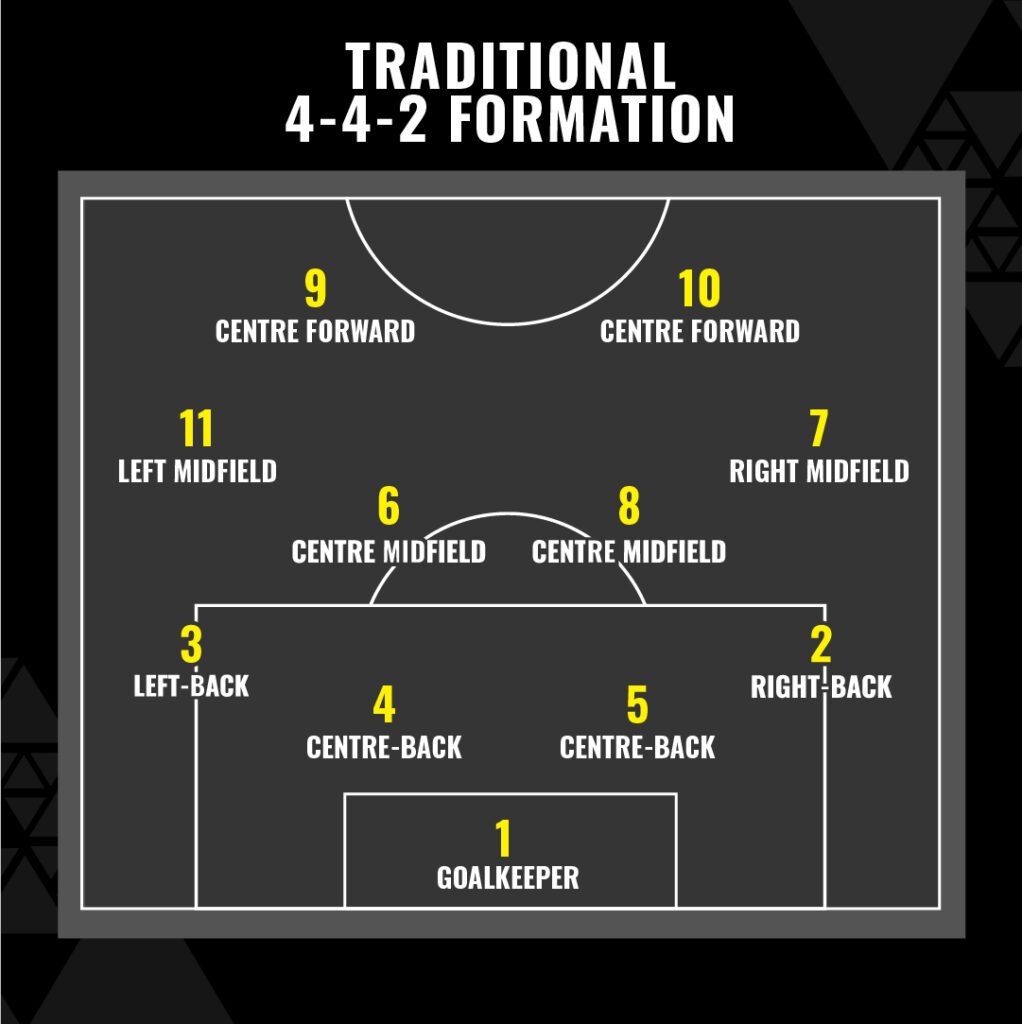
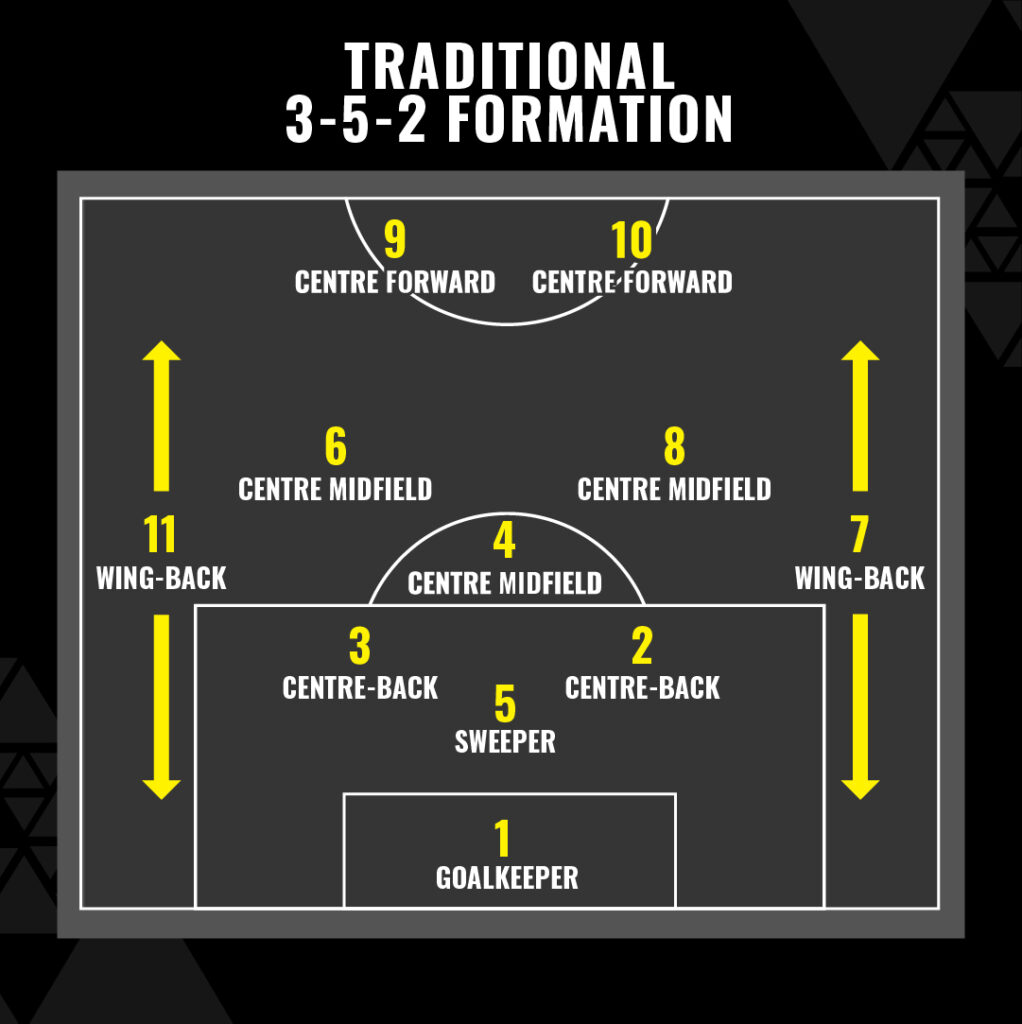
Defensive Football Positions
The primary role of any defender is to prevent the opposition from scoring goals. Outfield defenders will aim to close down/pressurise, tackle and dispossess the opposing team’s attacking players, whilst the goalkeeper must save/stop any shots on target from the opposition and will aim to catch any crosses or lofted passes into the penalty box.
Whilst the main objective of any defensive player is to prevent the opposing team from creating goal scoring chances & scoring goals, it’s not unusual for a defensive player to start a counter attack that leads to a goal for his/her team, for a central defender to score from a header from a corner kick, or for a left or right back to join in an attacking play by making a run down the wing/near the sidelines to deliver a cross into the penalty box. Defenders including Brazil’s Roberto Carlos and England’s Stuart Pierce are famous for scoring spectacular goals, despite being full backs.
| Defensive Football Positions & Numbers | ||||
| Position | Role | Shirt Numbers* | Responsibilities | Attributes |
| Goalkeeper | Defence | 1 | Preventing the opposition from scoring goals. Shot stopping/saving, catching crosses, passing the ball quickly for counter-attacks, decision-making, communication | Good hands/catching ability, agility, reflexes, height, good kicking ability for goal kicks & clearances, positional awareness, communication/leadership |
| Full Backs | Defence | 2 (Right Back) 3 (Left Back) | Preventing wide midfielders & wingers from attacking down the “flanks”/sidelines, tackling, pressurising attackers, assisting counter-attacks | Speed, strength, strong tackling ability, positional awareness |
| Centre Backs | Defence | 4 & 5 | Winning headers from opposition’s crosses & aerial passes, tackling centre forwards, maintaining the correct alignment/shape of the defence for the offside trap. | Strength, good tackling ability, good heading ability to win aerial duels, good communication, positional awareness |
| Sweeper | Defence | 5 or 6 | Free role in defence, intercept passes, prevent goal scoring chances, last line of defence besides goalkeeper | Great ability to read the game & predict attacking plays, good tackling ability, good passing & decision making skills |
| Wing- Backs | Defence/Midfield | 2 or 7 (Right Wing Back)3 or 11 (Left Wing Back) | Form a “back five” with the centre backs when defending, attack down the wings/sidelines, provide crosses & passes to attackers | Stamina to join both defence and attack, speed, dribbling skills to carry the ball forwards, ability to provide accurate passing & crossing, strong tackling ability |
Goalkeeper (GK)
Traditionally allocated the Number 1 Jersey
The most specialised player on the field, journalist Norman Giller famously told English Goalkeeping great Bob Wilson – “All goalkeepers are mad and you are madder than most”, which tells you a little about how difficult the job of a goalkeeper can be!
The main role of the goalkeeper is to prevent the opposing team from scoring. As they can see all the other players in front of them, they often play a critical role in communicating to and organising the rest of the defenders.
Goalkeepers are the last line of defence, in the most direct and literal sense. Any mistake often results in the opposing team scoring a goal, making it a high pressure position to play, requiring focus and nerves of steel.
The unique thing about the position of goalkeeper – is that they are the only players on each team that can use their hands (within the penalty box) in open-play. Goalkeepers rely on their hands to make saves/stop shots, for catching crosses and for throwing the ball out to their teammates in order to initiate a counter attack.
Goalkeepers, to some extent at least, tend to be judged on the numbers of goals that they concede each season. With the abundance of match & player statistics available in the modern era however, when evaluating a goalkeeper’s performance & overall ability, a manager or a football analyst may also look at statistics including – the number of shots on target relative to the number of clean sheets, “save ratio” and “goals prevented”.
Goalkeepers at the top level are agile, brave, have unwavering focus and are tall – the average height of a Premier League goalkeeper at the time of writing is 6ft 3in (190.7cm).
Famous Goalkeepers – Peter Shilton, Peter Schmeichel, Jordan Pickford
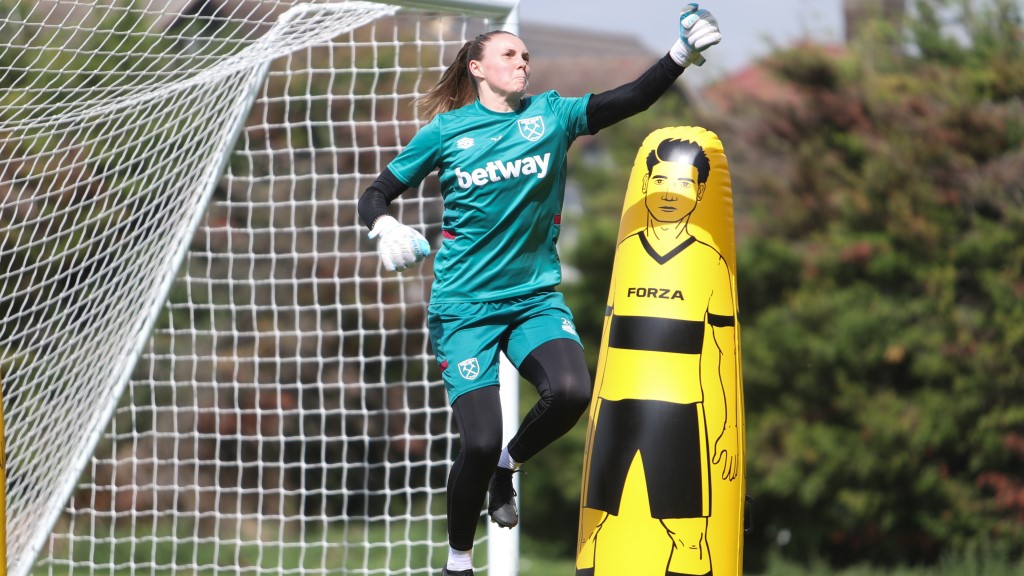
Fullbacks
Left Back (LB) – Traditionally allocated the number 3 jersey
Right Back (RB) – Traditionally allocated the number 2 jersey
Full backs are expected to provide defensive ‘cover’ down each side of the pitch (left or right depending on their position), and will have to tackle, disrupt, pressurise and dispossess the opposing team’s attacking players, especially the opposing left or right midfielder/winger.
Depending on the team’s tactics, full backs may also be expected to make attacking runs on occasion. If the full backs are expected to take on attacking roles, then a defensive central midfielder will often play cover in order to prevent the opposing team from making a successful counter attack.
Famous Fullbacks – Stuart Pearce, Gary Neville, Paolo Maldini
Right and Left Wing-Backs
One variation on the full back position is the “wing-back”. A wing-back is essentially a player who takes on some of the responsibilities of both a right or left midfielder/winger and a full back. Wing-backs are commonly utilised when a team adopts a 3-4-3 or 3-5-2 formation – with 3 centre-backs to provide cover down the middle of the defence.
A wing-back needs incredible fitness and endurance, to enable him/her to take on both defensive and attacking duties.
Famous Wingbacks – Roberto Carlos, João Cancelo, Trent Alexander-Arnold
Centre Backs
Traditionally allocated the number 4 & 5 jerseys
Two centre backs are used in the majority of formations and teams. Centre backs are usually tall, strong and great at winning and executing defensive headers. Centre backs must be able to read the game and like the goalkeeper, will often have good communication and leadership qualities.
Whilst traditionally centre backs were expected to have only defensive attributes and skills, such as strong tackling and heading ability, modern players may also be expected to be excellent passers of the ball – making them an important asset for setting up fast-paced counter attacks after they win back possession of the ball.
As with all defenders, the main role of the centre back is to prevent the opposing team from scoring and to gain possession from the opposing team when possible. Winning headers in the penalty box is a key part of the centre back’s duties.
Famous Centre Backs – Steve Bruce, Ruben Dias, William Saliba
Sweepers (SW)
Despite many influential, match and title-winning players such as Bobby Moore being sweepers, the position is not commonly used in the modern game. One exception is when a team utilises the 5-3-2 formation. When the team plays with wing-backs, one of the 3 centre backs may play a similar role to the traditional sweeper, positioning him/herself slightly deeper than the other 2 centre backs.
The role of the sweeper can also differ depending on the tactics of the team, but a sweeper is often a very defensive player, positioned just behind the other defenders to provide a level of cover should an attacking player or a pass from the attacking team penetrate the line of defence formed by the centre and fullbacks.
Some sweepers are also expected to take up positions on the field wherever they might be needed, including attacking positions. When playing as sweeper for the German national side in the 1990s, Matthias Sammer was known not only for his defensive prowess, but also his ability to attack the opposition with runs with the ball out of defence. He was also excellent at reading the game, and would make attacking runs off the ball to provide midfielders and attacking players with more passing options and to confuse the opposition’s defence.
These days, the job of the sweeper is typically carried out by a central defender, or the team will look to adopt a strict line of defence to play the “offside trap” with defensive midfielders playing a pivotal role in assisting the defence.
Famous Sweepers – Franz Beckenbauer, Matthias Sammer, Bobby Moore
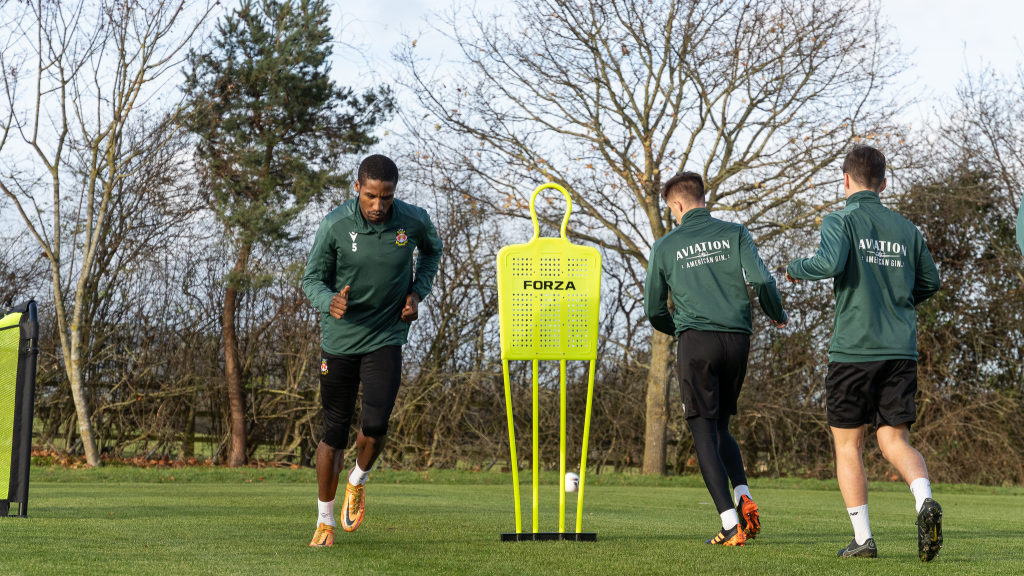
Midfield Football Positions
Midfielders will usually position themselves between the defenders and attackers of their team and as the name suggests, midfielders will spend the majority of the match in the middle third of the pitch.
Midfielders are key players when it comes to both attacking and defending – expected to win possession of the ball, keep possession and deliver passes & crosses to centre forwards, to create goal scoring opportunities and to score goals themselves.
Midfielders are expected to have an exceptionally high level of cardiovascular fitness. Required to join both attack and defence, fitness is a fundamental attribute of a midfielder so they can get into the right positions whenever required.
| Midfield Positions & Numbers | ||||
| Position | Role | Shirt Numbers* | Responsibilities | Attributes |
| Centre Midfielders | Midfield | 6 & 8 | Winning possession of the ball, linking defence to attack with passing and dribbling, aiding defence and attack | Stamina to get into defensive & attacking positions when required, good passing, tackling & communication skills |
| Wide Midfielders | Midfield | 7 (Right Midfielder)11 (Left Midfielder) | Provide attacking options down the flanks/wings of the pitch, provide width to make space for attacking players, provide crosses & passes to attackers, win possession, defend against opposition’s attacks down the wings. | Speed, stamina, crossing & passing ability, good dribbling skills & ability to run with the ball at pace to beat defenders |
| Defensive Midfielder | Midfield | 6 | Add a first line of defence, dispossess and slow down opposing team’s midfielders & attackers, provide accurate passes for counter attacks | Ability to read the game & predict attacking plays, great tackling ability, stamina, good passing skills, strength to win the ball, good heading ability |
| Attacking Midfielder | Midfield | 8 | Provide a link between midfield & attack, to provide attacking options to midfielders, to dribble & take on defenders, score goals from distance | Stamina, speed, good ability to dribble & run with the ball, strong passing skills to retain possession, good communication skills, |
| Play Maker | Midfield | 6, 8 or 10 | Free role in midfield. Often positioned in front of the defence, runs with the ball & takes on defenders, score goals from distance, long distance passes to attackers, create goal scoring chances. | Great ability to run with the ball, great decision making & the ability to pick out & execute passes to attackers & wide midfielders |
Centre Midfield (CM)
Traditionally allocated the number 6 & 8 jerseys
Often abbreviated to “Centre Mid”, there are usually two central midfielders on each team. A good central midfielder is able to read the game well, has great awareness of their teammates and the opposing players and can play with their back to, as well as facing the opposition’s goal. Regarded as an all-rounder with exceptional fitness, a centre midfielder has to be good at everything, including passing, tackling, dribbling and heading.
Some of the best centre midfielders are given “free roles”, and will take up positions all across the pitch. Often called “playmakers”, these centre midfielders are typically excellent at running with the ball and delivering accurate passes to initiate counter-attacks.
In some teams, central midfielders may be given specific roles – for example one central midfield might be the defensive midfielder, whilst the remaining central midfielder may take on the responsibilities of an attacking midfielder.
Defensive Centre Midfielder
A defensive midfielder will usually be positioned just ahead of the defenders on his/her team. They will not usually join the front line of any attack, except on some set pieces such as free kicks and corner kicks. Whilst they may position themselves in a more defensive position on the field, the best defensive midfielders will also dribble and pass the ball to initiate counter attacks. Defensive midfielders are usually tenacious tacklers and interceptors of passes, with a focus on winning the ball off the opposing team.
Attacking Centre Midfielder
Attacking midfielders position themselves in front of the defensive midfielder/other centre midfielder, just behind the centre forward(s). Often associated with the number 10 jersey thanks to famous players including Argentina’s Maradona and Messi, great attacking midfielders are skilled dribblers and passers of the ball. They will also typically be able to score spectacular goals from outside the box, with the ability to hit powerful and accurate shots from distance.
Famous centre midfielders – Roy Keane, Luka Modric, Kevin De Bruyne
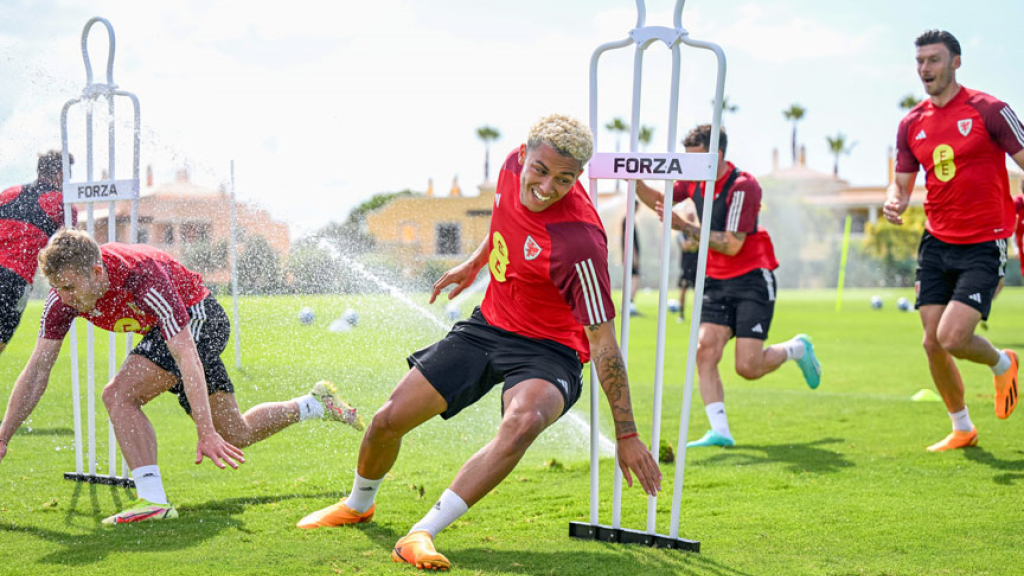
Wide Midfielders
Right Midfield – Traditionally allocated the number 7 shirt
Left Midfield – Traditionally allocated the number 11 shirt
Colloquially referred to as “Right Mid” and “Left Mid”; like other midfield players, right & left midfielders must contribute to the team’s attack and defence.
The exact role of both the right and left midfielders will depend largely upon the formation and tactics of the team. In a traditional 4-4-2 formation, with 4 defenders, 4 midfielders and 2 centre forwards, all midfielders will operate largely in the middle third of the football pitch, although they will be expected to join attacking and defending duties when necessary.
Right and left midfielders will usually be expected to “add width” to the team, by positioning themselves near the pitch’s sidelines. This positioning, should open up space for the forward/attacking players to exploit, especially if the midfielders can run with the ball and force the opposing team’s players to close them down to look for a tackle.
Right and Left Wingers
If a 4-3-3 formation is used, the right and left midfielders may be asked to take up a more attacking position alongside a single centre forward, whilst the 3 centre midfielders take up a more defensive role.
In this scenario, the right and left midfielders will usually be referred to or classified as “wingers”, and they will aim to attack down the flanks/wings of the pitch to deliver crosses, or to cut inside and either shoot or pass to the centre forward.
Famous Right & Left Midfielders – David Beckham, Gareth Bale, Christiano Ronaldo
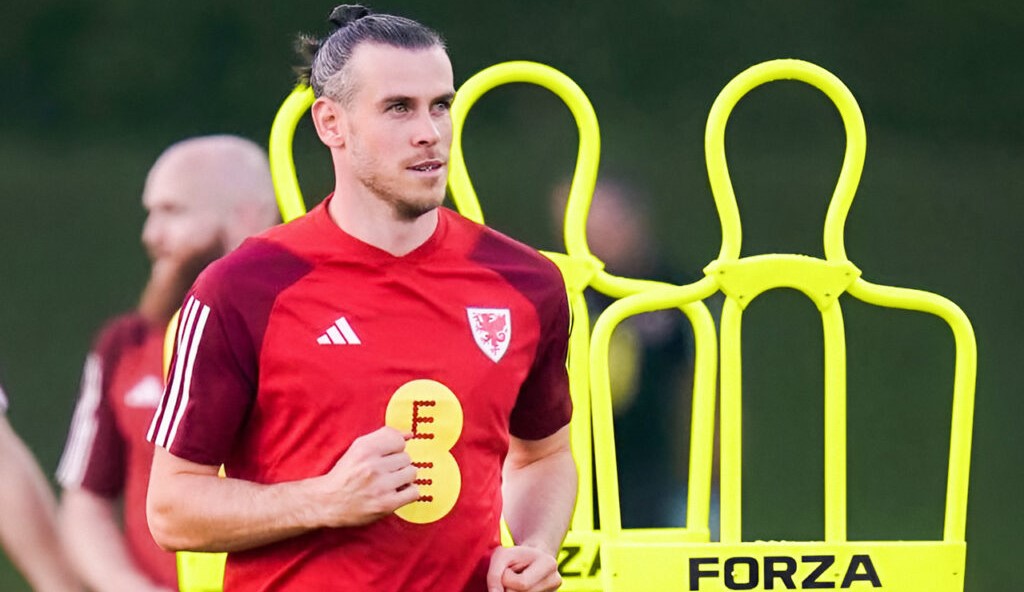
Attacking Football Positions
The main goal of any attacking playing is to score goals and/or create goal scoring opportunities. Attacking players are often fast and agile, although many great centre forwards have been strong, tall and great at winning headers.
Attacking players will work closely with midfielders to create space, confuse defenders and create an array of attacks.
Attacking players tend to get the most fame and glory of any team and will often demand the highest transfer cost and wages. Paris Saint-Germain for example, paid £200 million for centre forward Neymar in 2017; making him the world’s most expensive player at the time.
| Attacking Football Positions & Numbers | ||||
| Position | Role | Shirt Numbers* | Responsibilities | Attributes |
| Centre Forwards | Attack | 9 & 10 | Score goals, create scoring opportunities with movement/making runs & pressurising defenders, dribble/take on defenders, win headers in the attacking third of the pitch | Speed to outpace defenders on counter-attacks, strength to hold up the ball as midfielders join the attacks, good heading ability, quick dribbling in order to create shooting opportunities in tight spaces, strong shooting & finishing skills to score goals. |
| Supporting Centre Forward | Attack | 10 | Plays in front of midfield & just behind centre forward. Wins headers from aerial passes & crosses, wins possession & passes to centre forwards, runs at defenders, scores goals. | Great heading ability to win headers for the centre forward to attack and run onto, strength to hold the ball up & keep possession |
Centre Forward
Traditionally allocated the number 9 &/or 10 jerseys
Also referred to as “striker”, the main role of a Centre Forward in football is to score goals. Whilst centre forwards have a number of other responsibilities on the pitch, they are often judged by the number of goals that they’ve scored at the end of a given season.
Centre Forwards tend to be the target or focal point of most attacks/attacking plays, with midfield players looking to pass the ball or cross the ball to one of the forwards. Some of the best centre forwards of all time, for example Kylian Mbappé and Thierry Henry, have had exceptionally pace and dribbling skills, whilst others like Alan Shearer have built a reputations as centre forwards thanks to their heading ability, shooting power & accuracy and tenacity.
With an exceptional ability to read and anticipate the game, the “goal poacher” is yet another style of centre forward. Often positioned on the shoulder of the last defender, goal poachers always seem to be in the right place, at the right time. Always looking to get a toe, foot or head on the ball to divert it into the goal, the likes of Gary Lineker able to thrive on parried shots, ricochets and crosses. Whilst goal poachers are still prevelant at lower levels, in the Premier League, they are a dying breed, with centre forwards function now manifold, the are expected to work hard for the team and help create goal scoring chances themselves, rather than “goal hanging” and waiting for the next chance to pounce on.
Supporting Centre Forward
Whilst many teams play with 2 main centre forwards, who both adopt a similar attacking position throughout the match, other teams will field a “support striker” or “second striker” who plays a little deeper, close to the midfield. The role of the support striker is to help create chances for the main centre forward either by winning headers from long aerial passes and crosses, or by running with the ball from midfield areas.
As discussed above, in a 4-3-3 formation, with 4 defenders, 3 midfielders and 3 attacking players, the centre forward will usually be flanked by 2 wingers, who will typically play wider, but slightly less attacking positions.
Famous Centre Forwards – Alan Shearer, Erling Haaland, Kylian Mbappé
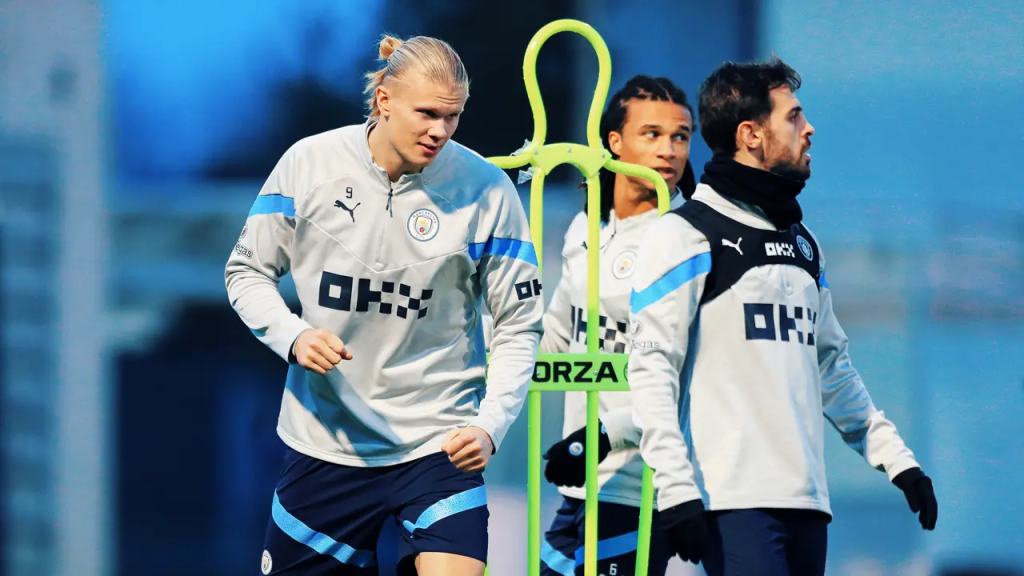
FOOTBALL POSITION FAQs
What are squad numbers in football?
With the squad numbers that are used today in the English Premier League, the numbers found on the back of a player’s shirt do not necessarily correspond to the position that they are playing during a given match.
Traditionally each position in football has been associated with a specific shirt number; but these days players can wear any number between 1 and 99, as long as the number has not already been allocated to another player on their team.
Squad numbers are used to associate a number with a specific team & player, rather than a position. Many players become synonymous with the number on the back of their shirt, for example Cristiano Ronaldo has built an entire “CR7” brand around his number 7 shirt; and in the Premier League once a player has been allocated a number at the start of the season, it cannot be changed until the following season.
Squad numbers also prevent fans purchasing replica shirts with their favourite players name and number on the back, only for the shirt to become outdated just a few months later. With squad numbers, the player will use the same shirt number all season.
So keep this in mind when watching a match. Whilst specific numbers are still synonymous with different positions, it’s possible that the number 9 for example, is not playing in the traditionally associated centre forward position, and may be playing in midfield or defence. In fact, in theory the goalkeeper could be wearing a shirt with the number 99 on the back and the left midfielder could be wearing the number 1 shirt!

How many players are in a football team?
There are 11 players from each football team on the field of play at one time during a match. One of the 11 players must be a goalkeeper, whilst the other 10 are outfield players.
In the Premier League, at the time of writing, up to 5 substitutions can be made by each team during a match, with a total of nine substitutes allowed on the bench (sidelines), ready to take the pitch if called upon.
What is the hardest position to play in football?
It’s difficult to decide or determine which is the hardest position to play in football, as it’s very subjective and each position presents its own specific demands. Having said that, most players tend to agree that the goalkeeper is one of the most difficult positions to play.
As the last line of defence, a tiny lapse in concentration or a single error can cause the goalkeeper’s team to concede a goal and lose a match. Goalkeepers are often present and instrumental in the high pressure, pivotal situations including penalty shootouts, one on ones with attacking players, free kicks taken near the goalkeeper’s penalty box and corner kicks.
Goalkeepers need to be exceptionally brave, calm and focussed. They also need exceptional agility, reflexes and a consistent & reliable ability to catch crosses and stop shots. In the modern game, keepers may also be expected to take on the role of a “sweeper keeper”. With a great first touch, timing and ability to read the game, many modern goalkeepers are able to intercept passes aiming for the opposing team’s forwards, and execute accurate passes to initiate counter attacks. A top level goalkeeper these days needs to have a very diverse range of skills!
Why is number 10 special in football?
The number 10 shirt is considered special by many, as it has been worn by some of the most famous and talented football players to have ever graced a football pitch. Pele, Maradona and Messi have all worn the coveted number 10 shirt during the peak of their careers.
What position does Messi play?
At the time of writing Messi plays as an attacking midfielder for Inter Miami and a playmaking midfielder for the Argentine national team.
Messi started his senior club career at Barcelona, playing mainly as a right winger when he first broke into the team in 2005. When Pep Guardiola took over as Barcelona manager in 2008, Messi began to play as a role in the centre of midfield, helping to create goal scoring chances for himself, as well as teammates Thierry Henry and Samuel Eto’o.
He later adopted and essentially created the role of the “false number 9” – playing a role between the opposing team’s midfield and defence, he became famous for his attacking runs and defence splitting passes – as well as his spectacular goals.

What is a FAN number in football?
A FAN number stands for “FA Number” and is used to log in to the FA’s websites and databases. It makes it easier to track individual coaches’ and players’ credentials and qualifications, which are all associated with a single FAN.
What is a legacy number in football?
Legacy numbers for England international football players, correlate to the order of when they first represented the country at senior level.
In specific matches, such as England’s men’s 1000th international game against Montenegro in 2019, a player’s legacy number is embroidered on their shirt – usually below the international crest/the three lions.
Player’s are sometimes presented with a legacy number shirt after they retire. For example, Viv Anderson was presented with an England shirt, embroidered with his legacy number – 936, prior to the 2019 Montenegro match mentioned above.
Do footballers choose their numbers?
When signing for a football club, players are usually given the option to choose from the squad numbers that are remaining. Some teams and managers however, may prefer and encourage players to select a shirt number based on the traditional numbers associated with each position. For example, at the start of the season, the left back might be encouraged to opt for the number 3.
When were shirt & position numbers first used in football?
Records indicate that the first time a football team wore shirt numbers was in 1928 when both Arsenal and Chelsea donned shirts with numbers as they played against Sheffield Wednesday and Swansea Town during the same weekend.
If you are interested in football positions and football shirt numbers, you’ll no doubt love our amazing range of football equipment. Suppliers of goalposts and training equipment to the likes of Manchester United, Newcastle United and Wrexham FC; whether you are looking for a professional stadium goal, or a rebounder for your back garden, we can help!
By: Andrew Griffiths
